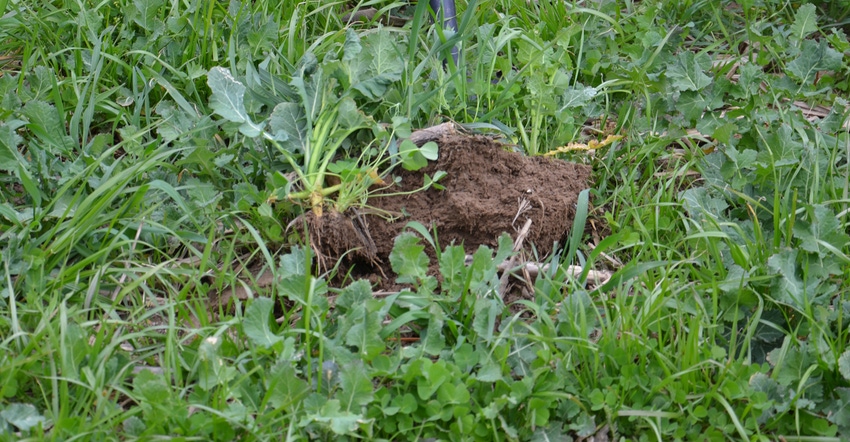January 26, 2017

Did you know that Indiana farmers planted over 1 million acres of cover crops during the fall of 2015? That’s according to Shannon Zezula, state resource conservationist for the Natural Resources Conservation Service.
How does he know? Primarily because Indiana Conservation Partnership personnel have been completing a statistically valid transect since the 1990s that tracks tillage trends, and in 2011 they started collecting cover crops data, too. Indiana is one of the few states that conducts these tillage transects. In 2011, Indiana farmers planted cover crops on about 180,000 acres. That’s a huge increase in just four short years! Indiana conservation professionals are currently collecting and analyzing data on cover crops planted in the fall of 2016. Zezula is willing to bet that cover crop acres will be even higher.
Cover crops are only part of the recipe for improving soil health. Zezula says many of these farmers growing cover crops are also using no-till, precision nutrient management, Integrated Pest Management and other conservation practices. As a result, they're reaping the rewards of improved soil health.
The total number of acres planted to cover crops in the state, and the rate of growth over the past few years, makes Indiana a leader nationally not only in using cover crops, but also in adopting practices that promote soil health.
On their own
Zezula points out that a variety of programs are available to help offset the costs and risks of planting cover crops. Cost-share funding is available through the Environmental Quality Incentives Program administered by the Farm Service Agency with technical guidance provided by NRCS.
Various watershed projects across the state, many of them enabled by EPA Project 319 funding channeled through the Indiana Department of Environmental Management, also include cost-share for cover crops and other conservation practices.
The real exciting news, Zezula says, is that of the over 1 million acres of cover crops planted in 2015 in Indiana, only about 200,000 acres were planted using program funding. In other words, for every 1 acre of cover crops planted with program funding, Indiana farmers planted 4 additional acres as part of their everyday farm management business decisions.
The fact that farmers are doing this on their own without compensation is a true sign of conservation success. Obviously, you’re figuring out that these practices do return benefits, even if you pay the full cost of implementing them.
Whether the government should pay the majority of funding is its own debate. Cover crops do benefit the environment, but they also benefit the farm. The truth is, it’s unlikely there will ever be enough public funding to pay farmers to do all the conservation practices needed to protect the environment.
Cover crops will be part of the equation of improving soil health and protecting the environment if farmers as a whole are convinced they pay their way. Based on Zezula’s report, it appears more of you are becoming convinced every day that cover crops pay. It’s an encouraging sign in an age where most people look for handouts instead of a helping hand.
You May Also Like




